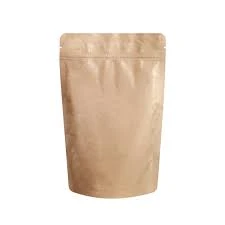- Afrikaans
- Albanian
- Amharic
- Arabic
- Armenian
- Azerbaijani
- Basque
- Belarusian
- Bengali
- Bosnian
- Bulgarian
- Catalan
- Cebuano
- chinese_simplified
- chinese_traditional
- Corsican
- Croatian
- Czech
- Danish
- Dutch
- English
- Esperanto
- Estonian
- Finnish
- French
- Frisian
- Galician
- Georgian
- German
- Greek
- Gujarati
- haitian_creole
- hausa
- hawaiian
- Hebrew
- Hindi
- Miao
- Hungarian
- Icelandic
- igbo
- Indonesian
- irish
- Italian
- Japanese
- Javanese
- Kannada
- kazakh
- Khmer
- Rwandese
- Korean
- Kurdish
- Kyrgyz
- Lao
- Latin
- Latvian
- Lithuanian
- Luxembourgish
- Macedonian
- Malgashi
- Malay
- Malayalam
- Maltese
- Maori
- Marathi
- Mongolian
- Myanmar
- Nepali
- Norwegian
- Norwegian
- Occitan
- Pashto
- Persian
- Polish
- Portuguese
- Punjabi
- Romanian
- Russian
- Samoan
- scottish-gaelic
- Serbian
- Sesotho
- Shona
- Sindhi
- Sinhala
- Slovak
- Slovenian
- Somali
- Spanish
- Sundanese
- Swahili
- Swedish
- Tagalog
- Tajik
- Tamil
- Tatar
- Telugu
- Thai
- Turkish
- Turkmen
- Ukrainian
- Urdu
- Uighur
- Uzbek
- Vietnamese
- Welsh
- Bantu
- Yiddish
- Yoruba
- Zulu
Innovative Solutions for Protective Foam Packaging Blocks and Their Applications
The Essential Guide to Packaging Foam Blocks
In today's fast-paced marketplace, the importance of effective packaging cannot be overstated. Among the array of packaging materials available, foam blocks have gained significant popularity due to their unique properties and versatile applications. They offer excellent protection, cushioning, and insulation for a variety of products ranging from delicate electronics to heavy machinery. This article will explore the key features, benefits, and applications of packaging foam blocks, providing insight into why they are an essential component of modern logistics and shipping.
Understanding Packaging Foam Blocks
Packaging foam blocks are made from various types of foam, including polystyrene, polyurethane, and polyethylene. Each type of foam has distinct characteristics that cater to different packaging needs. These blocks can be customized to fit the exact dimensions of the product being shipped, ensuring a snug fit that minimizes movement during transit. As a result, businesses can reduce the likelihood of damage to their products, which is a crucial factor in maintaining customer satisfaction and trust.
Key Features of Foam Blocks
1. Cushioning Foam blocks provide superior cushioning during transportation. They absorb shock and vibrations, protecting fragile items from impacts that could lead to breakage or malfunction.
2. Lightweight One of the standout properties of foam packaging is its lightweight nature. This feature helps to reduce overall shipping costs, making it an economical choice for businesses looking to minimize expenses.
3. Thermal Insulation In addition to physical protection, certain types of foam have good thermal insulating properties. This is particularly beneficial for products that are sensitive to temperature fluctuations, such as perishable goods or sensitive electronics.
4. Eco-Friendly Options With the growing awareness of environmental sustainability, many manufacturers are now producing biodegradable and recyclable foam materials. This allows businesses to meet eco-conscious consumer demands while still providing reliable packaging solutions.
packaging foam blocks

Applications of Packaging Foam Blocks
The versatility of foam blocks makes them suitable for a wide range of industries
- Electronics The electronics industry heavily relies on foam blocks to package devices like smartphones, tablets, and computer components. The precise fit and cushioning protect these high-value items from damage during shipping and handling.
- Healthcare Medical equipment and supplies often require specialized foam packaging for transport. Foam blocks safeguard delicate instruments and ensure they remain sterile until they reach their destination.
- Automotive In the automotive sector, foam blocks are used to protect components such as sensors, lights, and electronic parts during storage and transport.
- Retail Many retail businesses choose foam blocks for their promotional products and consumer goods. Foam packaging not only protects the items but also enhances the unboxing experience for customers.
Conclusion
Packaging foam blocks serve a vital role in ensuring that products arrive safely at their destination. Their cushioning properties, lightweight nature, and versatility make them a popular choice among various industries. As businesses continue to seek effective, efficient, and sustainable packaging solutions, foam blocks will undoubtedly remain a cornerstone of the packaging landscape. By investing in high-quality foam packaging, companies can protect their products, enhance customer satisfaction, and contribute to their overall reputation in the marketplace. With continuous innovations in foam technology, the future of packaging foam blocks looks promising, offering even more tailored solutions to meet the ever-evolving demands of the global marketplace.













